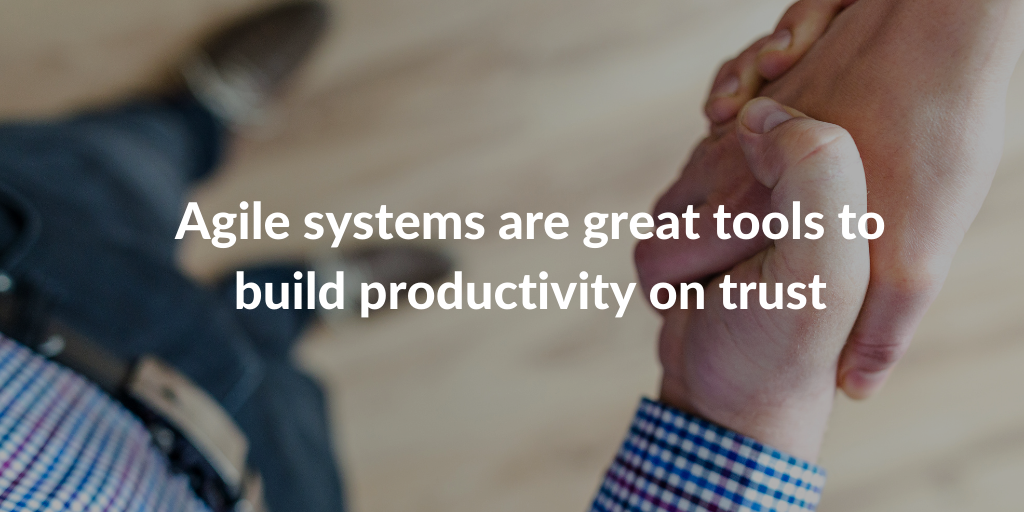“Agile systems are great tools to build productivity on trust” – Interview with Eralp Tezcan

Eralp is working as a Scrum Master at Realdolmen-Inetum and cooperates with other Scrum Masters to work wonders with our teams.
What is your current job title? What is it you actually do?
I am a Scrum Master supporting a number of teams to improve their working processes and optimize their inter-team interactions.
How did you arrive to follow a project management career?
Quite by chance, actually. During the first years of my career, I had the opportunity to be part of a significant restructuring effort of a bank. It showed me the importance of clear organizational structures with fluid communication channels and a strong emphasis on transparent responsibility definitions.
Many years after I left the bank and while walking on an entirely different career path, a friend of mine asked me to join him in his startup for online project management training. Considering my earlier experience and readiness to make another career change, I joined him. This was about 9 years ago.
You have an AgilePM Certificate, how did that help you reach your goals?
In the beginning, its value was very apparent in theory but highly obscure in its practical application.
The reason for that was mainly because there were no documented examples out there to give an idea of how best to start implementing the AgilePM processes and structures.
At the time that I got certified for AgilePM, I was already an accredited PRINCE2 trainer and I already had my PSM I certification. So I could say I knew my way around two potentially complementary frameworks and AgilePM was sort of the missing link between them.
For many years, I didn’t have the opportunity to apply to AgilePM.
But about two years ago, this changed and I started working in a development project as a Scrum Master / Scrum Coach for a corporate client with multiple Scrum teams.
In this project, the application of Agility was paramount and the idea of teams working as Scrum Teams received complete agreement from both sides. On the team level, it was working but as Scrum does not provide a framework on the project governance side their engagement had to be coordinated.
Especially because this particular project enjoyed multiple technical and business stakeholders.
Fortunately, the company I was working for at the time, used AgilePM as one of its primary Agile frameworks and we applied the organizational structure of AgilePM to our project.
This helped significantly to ensure alignment among the stakeholders and helped build a common vision.
To summarize, we used the AgilePM organizational structure to improve the stakeholder engagement and applied the Nexus framework to organize multiple Scrum Teams.
AgilePM is considered to be IT-oriented however we know it’s possible it can be applied for any kind of project.
Could you share an experience with AgilePM outside IT?
My experience using AgilePM is limited to IT projects.
However, all Agile frameworks and concepts are applicable for any kind of project.
In another project, our team used the Scrum framework to transform a marketing team into a kanban-using team. On a personal level, I used Agile concepts to manage the renovation of my house.
Do you think AgilePM is easy to apply for a PM Team? What would it take to do so?
Actually, the structure of the AgilePM framework is very simple and straightforward.
However, the mindset behind this structure is different from the traditional management mindset.
For that reason, an AgilePM coach is a must, as the framework also points out.
Did Agility offer guidance during the changes in 2020? If so, how?
Changes in 2020 forced organizations to become more Agile.
Remote working removed the individuals from environments that are potentially designed for control.
Now that everyone works out of those environments, both the individuals and organizations are learning to trust each other. Agile systems are great tools to build productivity on trust.
I know that you also have a wide knowledge of using other Project Management methodologies like PRINCE2.
How would you compare PRINCE2 with AgilePM?
AgilePM is an Agile version of PRINCE2.
In fact, in an article, I read it was mentioned that the AgilePM was originally designed to be compatible with PRINCE2 so that the transition from one to the other could be easy.
I think it is also one of the earliest Agile methods.
AgilePM comes as scalable. Additional methods are not required to make it applicable to single team projects or for multiple team projects. It is very flexible and that makes it very powerful.
How do you choose the right methodology for your project, are there projects that benefit more from PRINCE2 or AgilePM?
Now that I have at least one experience using AgilePM, I would aim to build a project based on its structure. However, methods such as PRINCE2 or AgilePM aim to optimize the information flows and decision-making mechanisms within the project.
In the end, once these concepts are internalized, you tend to use whatever aspects of these methods are useful to solve your existing problems without thinking too much about which aspect belongs to which method.
You end up building a custom method for the specific project you are working in and these methods change with each new project.
How do you see your future in Project Management and what are the things you like to learn to keep on developing yourself as a professional?
There are many aspects of project management and project delivery.
On the management side, I am planning to improve myself further on portfolio management and Agile leadership. On the delivery side, learning more about DevOps would be a great benefit.
 Eralp Tezcan
Eralp Tezcan
Scrum Master
Eralp is working as a Scrum Master at Realdolmen-Inetum and cooperates with other Scrum Masters to work wonders with our teams.







